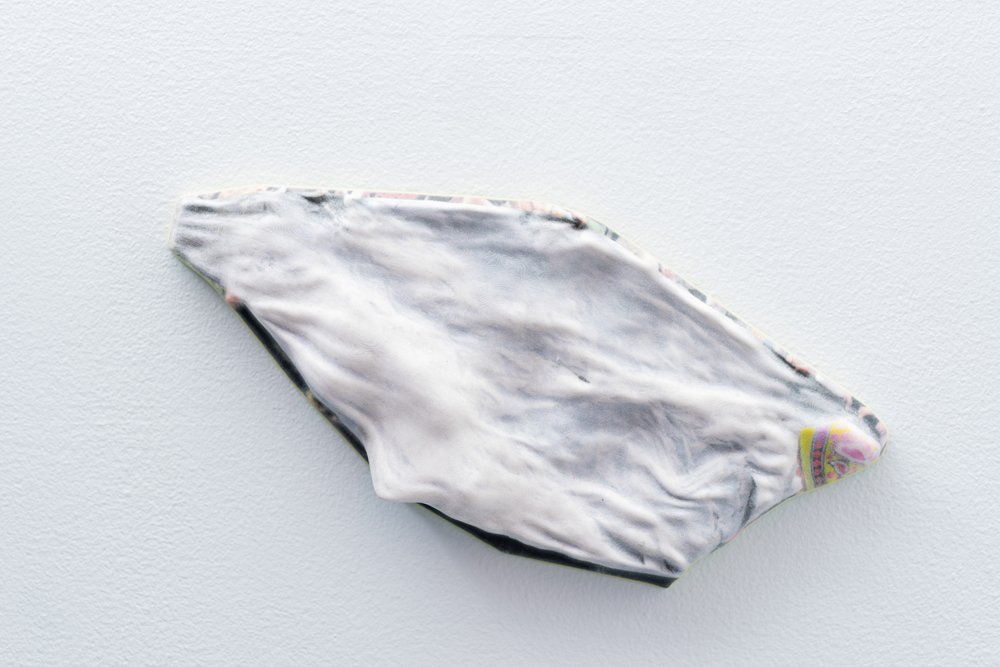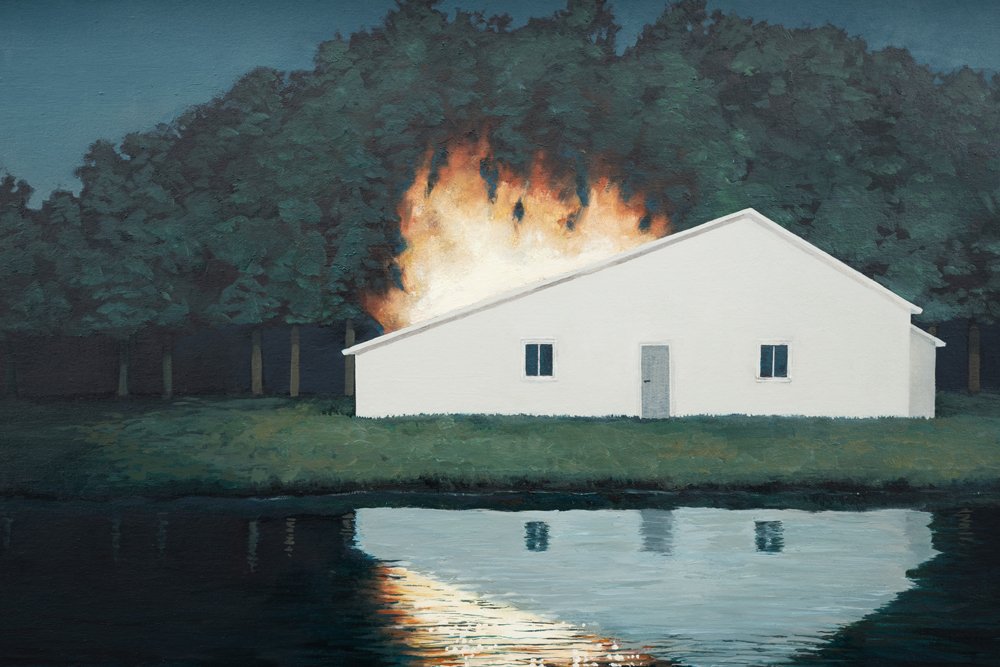Jodie Lyn-Kee-Chow, Starmageddon (Documentation of performance at “Secret Garden Art Festival” Studio 7, Temporary Ungovernable Zone Fort Tilden Beach, Queens, NY), 2017, Photo credit Christopher Garcia Valle
NEW YORK
Catenations
Sep 11 – Oct 11, 2020
The gallery will be open every Sat & Sun from 3 – 6pm and by appointment
Before visiting, please read over our COVID Regulations and Protocols below
-
NY / COVID Regulations
In accordance with New York State Covid-19 Health & Safety guidelines, TSA & Transmitter will be operating using the following procedures:
• Masks are required for ALL visitors and staff.
• Only one visiting party will be allowed entrance to the gallery at a time.
• Visiting parties can be no larger than 4 people.
• Door leading up stairwell will be closed (and locked from outside).
• Visitors will be asked to ring buzzer upon arrival.
• Should a visitor arrive while someone is already in the gallery space, the visitor will be asked to wait outside until the current party has left and “high-touch” surfaces have been wiped down.
• All “high-touch” surfaces (door handles, railings, checklists, etc.) will be sanitized between each visit.
• Visitors must fill out a Covid-19 Waiver & Contact Form.
• Pens provided to visitors for signing Covid-19 Waivers will be sanitized after use by each visitor.
• Hand Sanitizer will be provided for visitors and staff alike.
• Bathroom is off-limits for visitors.
Thank you in advance for your understanding and cooperation!
Fluid Dialogue
Round-robin artist talks featuring artists from Catenations
Recordings of the conversations are available here: June 17th conversation / June 24th conversation
Tiger Strikes Asteroid New York is pleased to reopen by presenting Catenations, originally set to open March 27th, this exhibition was delayed due to the COVID-19 pandemic. In June the artists and curators held two round-robin style artist talks which can be watched below on the exhibition page. Keep an eye on @TSA_NY on Instagram and Tiger Strikes Asteroid New York on Facebook for content related to this exhibition.
This exhibition features work by Atul Bhalla, Gail Biederman, Jodie Lyn-Kee-Chow, Mary Dwyer, Timothy Fadek, Julia Krolik and Owen Fernley, Phoebe Murer, Bridget Frances Quinn, Karolin Schwab, Motohide Takami and Cheryl Yun. The exhibition is curated by Rachael Gorchov and Jo Yarrington.
Both inside and outside of us, water comprises 60% of the human body and 70% of the earth’s surface. Access to clean water is an essential human right. Beyond basic survival, we use it in a myriad of ways throughout our daily lives. It is the basis of many cultural and spiritual practices. Our use of water defines geographic borders as well as influencing trade and economics.
In chemistry, catenation is the bonding of atoms of the same element. This exhibition uses the title Catenations as a way to frame a collection of artworks that together invite the viewer to consider the role of water in their own health, happiness, and the politics surrounding water. The works range in media from painting, photography and video to installation and performance.
Phoebe Murer has been making paintings of swimming pools and water parks for over ten years. Her painting in this exhibition portrays a joyful and physical communing with water that she never experienced as a child. Through her adult eyes these arenas, which some might view as overly artificial, are transformed into surreal and magical spaces.
In his piece “What will be my defeat?” performed in Hamburg, Germany, Atul Bhalla, an artist based in India, draws from an episode in the Indian epic “Mahabharata” in which a body of water asks the five princes to answer questions before drinking. Bhalla encourages the viewer to continue this conversation with water about human existence and purpose by sending them to local bodies of water with questions he distributes at the gallery in the form of stickers.
In “The Resonant Underbelly of Suburbia” Bridget Frances Quinn also asks the viewer to imagine an interaction with water, in this case by singing. She invited residents of Warren, Michigan to take part in site-specific vocal meditations in stormwater culverts. While working on this project, she uncovered illicit industrial polluting of local creeks and through civic engagement aided in the elimination of this activity. She wonders, “What other wounds and healing potentials might we discover if we wade into our local waters and sing to them?”
Gail Biederman is an installation artist who through mapping examines identity, relationships and physical terrain. Her site-specific installation at TSA brings the viewers’ attention to the water pipes that run the length of the gallery. Both she and German artist Karolin Schwab incorporate water as a physical presence within the space.In her piece “Black water” Karolin Schwab places several black circular reflecting pools onto the floor. Each of them functions as a mirror, bending and distorting the viewers’ perception of themselves within their surroundings. As she describes, “Even in this still state, it is the water that makes something happen. It is because of the water that we can see.”
Jodie Lyn-Kee-Chow is a Jamaican-American artist who makes work dealing with globalism and Caribbean folklore. In her performance “Starmaggedon” she entangles herself within a starfish-shaped net filled with plastic waste. The work addresses the major pollution caused by human negligence in our oceans. The exhibition will feature the net with photo-documentation of the performance.
Mary Dwyer, a healthcare worker and artist, makes intimate paintings commemorating important yet anonymous figures from history. In her painting “Sanitation Workers” she honors “World Toilet Day.” The United Nations created this day to highlight the importance of access to clean water because of how water-borne illnesses play a significant part in the global sanitation crisis.
In response to the Fukushima tsunami disaster in 2011, Japanese artist Motohide Takami uses a symbolic image of a house in his painting “Fire P” to speak to our inability to connect with disaster until it becomes personalized. Water acts as a boundary – separating the viewer from the disaster at hand.
Six years ago, photojournalist Timothy Fadek completed a story with Terra Mater magazine on horseshoe crab’s powder-blue blood and its harvesting for use in testing the purity of pharmaceuticals. This is still practiced despite industry efforts to seek alternatives. The work in this exhibition documents the bleeding process at Charles River Laboratories in Charleston, SC. In their code-based artwork “Depth to Water” Canadian collaborators Julia Krolik and Owen Fernley visualized 367,089 private well water data points revealing the geography of Ontario. This work highlights how groundwater, one continuous subterranean resource, is arbitrarily shared between parcels of private land, emphasizing the increasing importance of equal water distribution.
And finally, photographer Cheryl Yun has created 3D printed objects rendered from media images of global catastrophes dealing with forced migration and climate change. She focuses on water and the conflicts surrounding it by isolating sections of low-resolution 2D images found online. Yun chooses images that carry weight and gives them physical weight.
Tiger Strikes Asteroid’s 2020 exhibition program is sponsored, in part, by the Greater New York Arts Development Fund of the New York City Department of Cultural Affairs, administered by Brooklyn Arts Council (BAC).Atul Bhalla, excerpt from “What will be my defeat?”, 2012 – 2020, performance



















photos by Daniel Johnson

